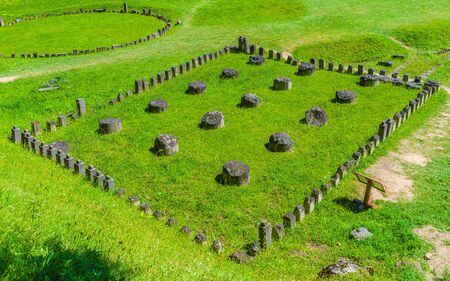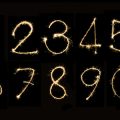1. Introduction: Echoes of the Celts in Contemporary Dreamscapes
Step into the misty highlands of Scotland or wander the emerald valleys of Wales, and you will sense an invisible thread weaving ancient stories into modern life. The Celtic heritage is not merely a relic; it is a living force that breathes through poetry, song, and the subtle rituals of daily existence. Nowhere is this legacy more quietly profound than in the realm of dreams. In both Scotland and Wales, the interpretation of dreams carries echoes of druidic wisdom, bardic tales, and ancestral lore—elements that have shaped a unique approach to understanding the messages our sleeping minds reveal. Dreams here are not simply private reveries but communal bridges, linking individuals with their history, land, and kin. In these lands where standing stones mark horizons and folk tales shape identity, dreaming remains an enigmatic thread—a whisper from the past guiding hearts in the present. Through exploring how Celtic traditions influence dream interpretation today, we discover how ancient beliefs continue to infuse meaning into even the most ordinary of nights.
2. Ancient Celtic Attitudes Towards Dreams
The ancient Celts, whose mystical presence still lingers in the landscapes of Scotland and Wales, held dreams in profound reverence. To them, the dreamworld was not simply a realm of sleep-induced illusions, but a vibrant spiritual domain that offered glimpses into hidden truths and messages from the Otherworld. Their worldview was woven with threads of prophecy, otherworldly guidance, and a deep connection to nature spirits—beliefs which continue to echo through modern interpretations of dreams across these lands.
The Spiritual Significance of Dreams Among the Celts
For the ancient Celts, dreams were sacred portals. Druids and seers were known to interpret nocturnal visions as omens or instructions from ancestors, deities, or elemental spirits. These messages often guided tribal decisions or foretold major events, bestowing upon dreams a status equal to that of spoken prophecy.
Prophecy and Divination
The art of dream interpretation was closely linked with prophecy. Dreams that featured particular symbols—like stags, rivers, or misty hills—were believed to reveal future happenings or offer warnings. This tradition of seeking foresight through dreams has left an indelible mark on the collective psyche of Scotland and Wales.
Otherworldly Guidance
Celtic mythology describes the Otherworld as a parallel reality filled with wisdom and enchantment. Dreams were seen as bridges between these realms; one might encounter fae folk, ancestral spirits, or tutelary deities offering cryptic counsel or blessings under the moonlit veil of slumber.
Nature Spirits in Dreaming
The Celtic landscape teemed with sacred groves, rivers, and mountains believed to house nature spirits. Dreams involving natural elements were interpreted as direct communications from these entities. Even today, recurring motifs like standing stones or ancient oaks in dreams are sometimes regarded as echoes of these age-old beliefs.
Table: Common Themes in Ancient Celtic Dream Beliefs
| Theme | Description | Modern Echoes in Scotland & Wales |
|---|---|---|
| Prophetic Visions | Dreams foretelling future events or offering warnings | Continued belief in precognitive dreams |
| Otherworld Encounters | Meeting ancestors, deities, or fae in dreams | Storytelling traditions featuring dream journeys |
| Nature Spirit Messages | Narratives involving sacred trees, rivers, animals | Symbolism of nature in local folklore and dream analysis |
This enduring spiritual perspective has not only shaped historical attitudes but continues to influence how people in modern Scotland and Wales interpret their nightly visions—often blending ancient reverence with contemporary intuition.
![]()
3. Folk Legends and Oral Traditions: The Lifeblood of Dream Narratives
Across the mist-laden highlands of Scotland and the rolling green valleys of Wales, the echoes of ancient voices still linger—carried on the wind and woven into the fabric of daily life. For centuries, before written word became commonplace, it was through the spoken tale that wisdom travelled from hearth to hearth. In these Celtic lands, oral storytelling thrived as a sacred art, its bards and wise women revered as keepers of communal memory. Dreams, with their enigmatic messages, found fertile ground within this tradition. Each fireside gathering became an opportunity to share nocturnal visions: a stag glimpsed in a moonlit glen, a silver river flowing backwards, or a whispered name in the night.
Within these tales, dreams were never mere flights of fancy. Instead, they were treated as potent omens or messages from ancestors and spirits. Through generations, folk legends developed intricate systems of dream symbolism unique to each region—whether it was the appearance of a red kite soaring over a Welsh hillside or the sound of spectral pipers echoing across the Scottish moors. These recurring motifs were catalogued not in books but in memory, their interpretations shifting with each telling yet always rooted in shared belief.
The oral tradition also allowed dream lore to adapt organically, responding to changing times while retaining its mystical core. Elders would recount how certain dreams foretold calamity or prosperity for the clan, cautioning listeners to heed both warning and blessing. Even today, echoes of these narratives can be heard in rural communities where dream interpretation remains entwined with local legend—a tapestry of meaning passed down by word of mouth rather than ink on paper.
Through this living tradition, dreams became more than private experiences; they were collective maps for navigating uncertainty and understanding one’s place within the community. Thus, oral storytelling has preserved—and continues to shape—the way dreams are interpreted across modern Scotland and Wales.
4. Modern Interpretations: Where Old Myths Meet New Academia
In the vibrant landscapes of Scotland and Wales, the ancient Celtic reverence for dreams continues to ripple through contemporary culture, yet its voice now mingles with that of modern psychology and spiritual innovation. Today, dreams are no longer seen solely as cryptic prophecies or messages from the Otherworld; instead, they are explored at the intersection where ancestral wisdom meets academic inquiry.
The influence of psychology, particularly the theories of Freud and Jung, has gently reshaped how Scots and Welsh people contemplate their nocturnal visions. While a dream about a white stag might once have been viewed exclusively as an omen or a call to adventure from the fae, it is now equally likely to be considered a symbol of personal transformation or the subconscious mind’s yearning for change. Academic research delves into the neural mechanics of dreaming, while therapists encourage clients to see dreams as reflections of inner emotional states.
Contemporary spiritual movements also play a significant role. In modern gatherings—from urban yoga studios in Edinburgh to holistic retreats in Snowdonia—Celtic dream lore is woven together with mindfulness practices, astrology, and energy healing. This synthesis creates a unique tapestry where ancient mythological motifs are reinterpreted through a lens of self-discovery and empowerment.
Traditional Celtic Interpretation |
Modern Psychological Perspective |
Contemporary Spiritual Approach |
|---|---|---|
Dreaming of rivers: passage to the Otherworld |
Symbolises life changes or emotional flow |
Seen as energetic cleansing or soul journeying |
Seeing ancestors: guidance from spirits |
Manifestation of memory or unresolved family dynamics |
Opportunities for ancestral healing rituals |
Encountering animals: omens or clan totems |
Representation of instinctual drives or personal strengths |
Spirit animal journeys for insight and protection |
This evolving relationship between old myth and new science invites a deeper appreciation for dreams as both mirrors and mysteries. In modern Scotland and Wales, the dance between tradition and transformation illuminates not only how people interpret their sleeping visions but also how they navigate identity, belonging, and meaning in a rapidly changing world.
5. Language, Symbols, and Celtic Identity
In the dream-laden landscapes of Scotland and Wales, language is more than mere communication—it is a living current that shapes how dreams are conjured and understood. The Gaelic and Welsh tongues, with their ancient cadences and poetic flourishes, act as vessels for collective memory and spiritual wisdom. Words like “aisling” in Gaelic or “breuddwyd” in Welsh do not simply mean ‘dream’; they evoke realms where ancestors whisper and the veil between worlds thins. When dreams are recalled or shared within families or communities, the very structure of these languages colours the imagery, infusing it with shades of myth and ancestral resonance.
Native symbolism is woven tightly into this linguistic tapestry. Symbols such as the triskele, the stag, or the red dragon are not just visual motifs—they are keys to interpretation, grounding dreamers in a uniquely Celtic cosmology. A dream of running through misty glens may be read as a journey through liminality; seeing a salmon leaping upstream might hint at wisdom sought or challenges overcome, echoing tales from the Mabinogion or Scottish folklore. These symbols carry an emotional charge that deepens both the dreaming experience and its retelling, embedding each vision in layers of cultural meaning.
The poetic nuances of Gaelic and Welsh also foster a more intuitive mode of dream interpretation. Metaphor and allusion abound: a single word can open up a vista of meanings, inviting the dreamer to become a storyteller themselves. In this way, dreams are not merely analysed—they are sung, recited, woven into conversation with the same reverence given to traditional bardic poetry. This lyrical approach encourages dreamers to trust their inner knowing, blending personal intuition with communal wisdom rooted in Celtic identity.
6. Personal and Collective Dreamwork in Scottish and Welsh Communities
Across the hills and valleys of Scotland and Wales, the ancient art of dream interpretation is far from a forgotten relic. Instead, it finds new life in both personal rituals and collective gatherings, where the echoes of Celtic heritage reverberate through contemporary practice. From the firesides of remote Highland villages to urban holistic centres in Cardiff, stories abound that illustrate how dreams continue to be woven into the cultural fabric.
The Wisdom of Elders: Guardians of Dream Traditions
In some rural communities, village elders still hold the role of dream keepers. It’s not uncommon for a grandmother in the Outer Hebrides to share with her grandchildren tales of “an dara sealladh”—the second sight—and guide them through interpreting their dreams as messages from ancestors or warnings from nature. These gatherings are gentle, intuitive affairs, where dreams are spoken aloud over tea and oatcakes, each symbol carefully considered through the lens of local lore.
Modern Therapists Bridging Old and New
Meanwhile, in cities like Edinburgh and Swansea, therapists inspired by Celtic traditions blend ancient wisdom with contemporary psychology. One such practitioner, Dr. Ffion Davies, hosts monthly dream circles where participants explore nocturnal visions using techniques rooted in bardic storytelling and mythic archetypes. In these sacred spaces, people rediscover their connection to community by sharing their most intimate dreams, finding meaning not just as individuals but as part of a living heritage.
Ceremonies and Community Gatherings
Seasonal festivals such as Samhain or Calan Gaeaf remain key moments when collective dreamwork comes alive. Here, folk gather to recount dreams from the thinning veil between worlds, guided by druids or local storytellers who interpret symbols with reverence for tradition. These gatherings foster a sense of belonging—a shared journey into the mystery that knits together past and present.
Through all these examples—whether whispered in Gaelic beneath a full moon or spoken boldly in English within a city studio—Celtic-rooted dreamwork continues to nurture souls across Scotland and Wales. It is both a personal pilgrimage and a communal ritual: an intuitive dance between memory and possibility that honours the unseen threads binding land, lineage, and longing.
7. Conclusion: Weaving Old Wisdom Into New Visions
As we reflect on the intricate tapestry of dream interpretation in modern Scotland and Wales, it becomes clear that Celtic heritage still whispers through the misty hills and bustling cities. The echoes of ancient seers, druids, and wise women linger in the collective imagination, guiding how dreams are viewed today. In a world often swept up by technology and rationality, the spiritual resonance of Celtic traditions offers both comfort and continuity for those seeking meaning in the night’s visions.
Celtic wisdom teaches us to see beyond the surface, encouraging an intuitive approach where symbols from nature—a stag in the forest, the call of the blackbird—invite us to listen deeply to our inner lives. Modern dreamers in Scotland and Wales often find reassurance in this lineage, trusting that their dreams are not random but woven with threads connecting them to ancestors who gazed at the same moonlit sky.
This living tradition does more than preserve old stories; it breathes new life into them. Dream circles, storytelling sessions, and community gatherings have evolved into contemporary forms where people share their nocturnal journeys, guided by both ancient motifs and present-day experiences. The dialogue between past and present enriches not only personal understanding but also a shared sense of belonging—a reminder that every dream is part of a wider cultural story.
In drawing upon Celtic heritage, Scots and Welsh alike find guidance for their waking lives. Dreams become gentle signposts or fierce warnings, offering counsel just as they did centuries ago. The enduring belief that dreams carry messages from the Otherworld or ancestral spirits provides comfort during times of uncertainty, reinforcing trust in unseen forces and one’s own intuition.
The continuity of these practices ensures that even as society changes, the heart of Celtic dream interpretation remains vibrant. It is a living bridge—one foot rooted in mythic memory, the other stepping boldly into tomorrow. Through this connection, modern Scotland and Wales honour their past while dreaming forward into ever-unfolding futures.


